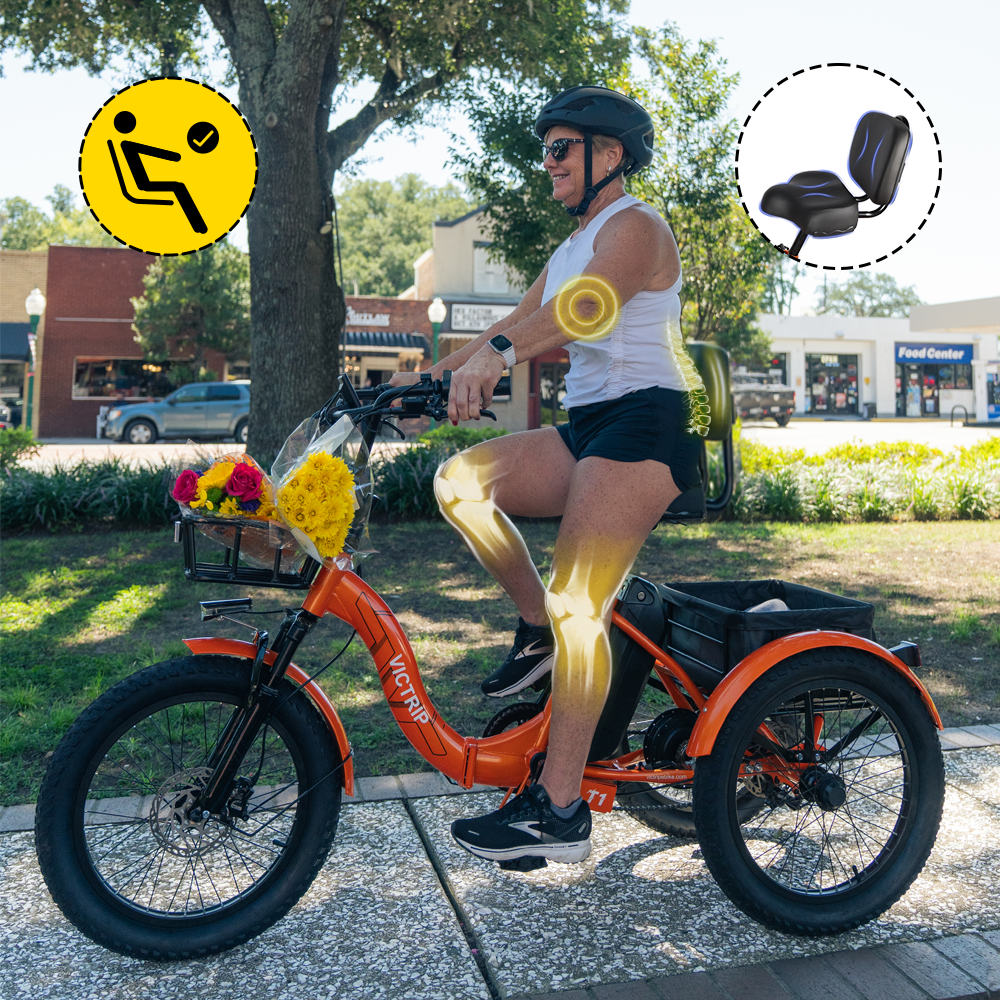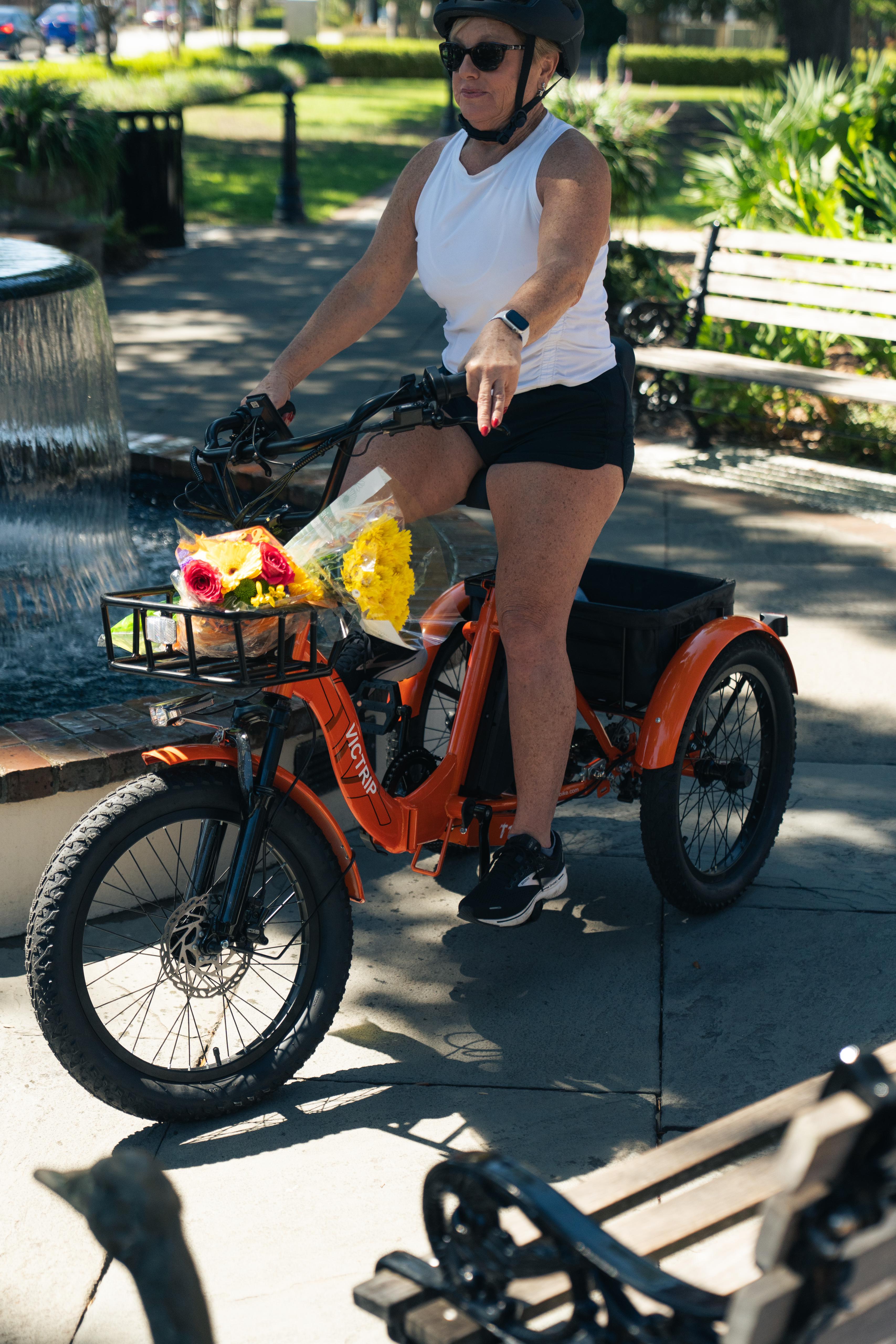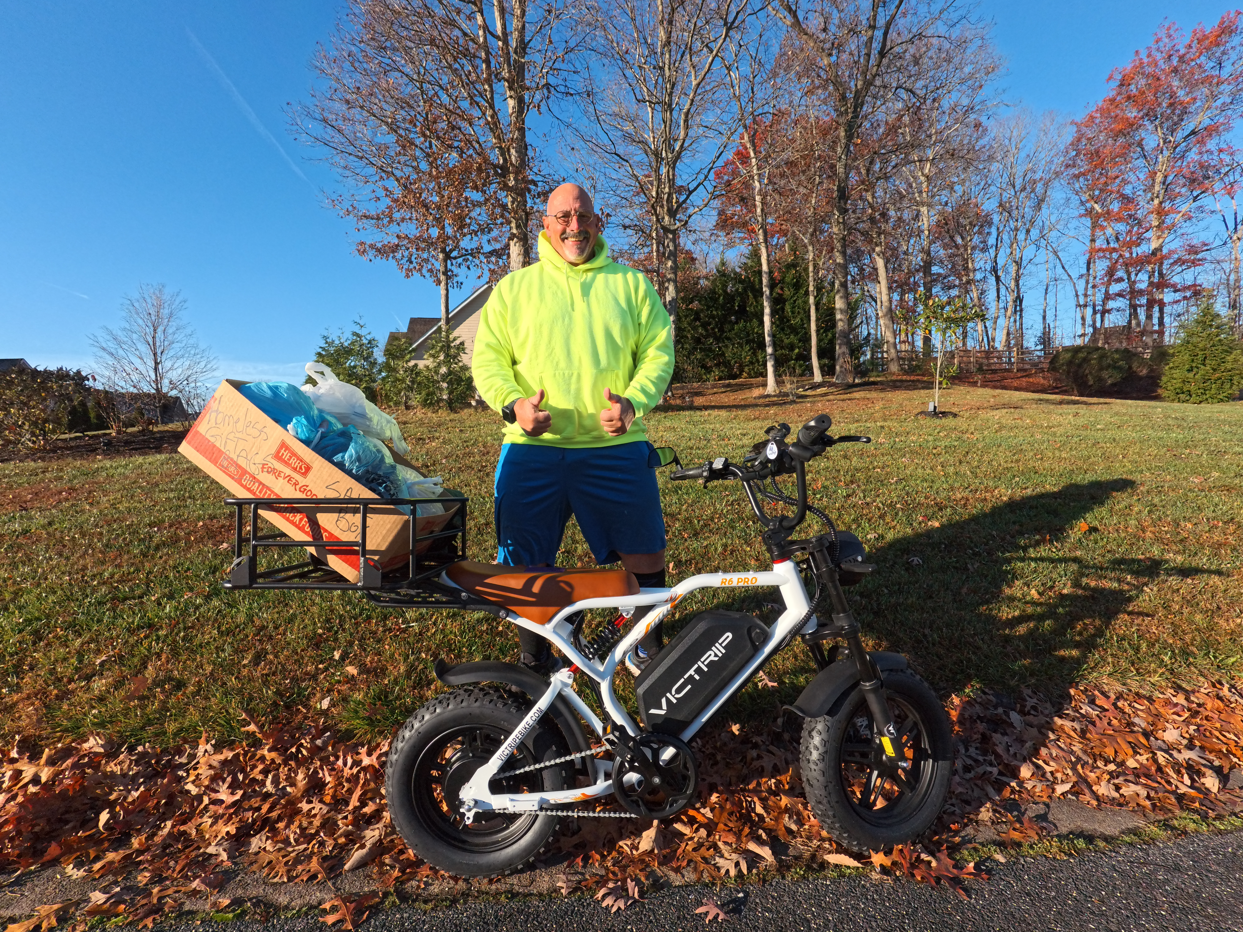
When shopping for your first (or next) electric bike, one question quickly comes to mind: “How far can I go on a single charge?” That’s what EBike riders refer to as range, and it’s one of the most important specs to understand before buying.
Just like a car’s gas mileage, an EBike’s range determines how many adventures you can take without “refueling” (in this case, plugging in your charger). Whether you’re commuting to work, exploring mountain trails, or cruising along the coast, knowing your range helps you avoid the dreaded dead battery miles from home.
What Is EBike Range?
In simple terms, EBike range is the distance your electric bike can travel on a fully charged battery.
It’s a bit like asking how far a car can go on one tank of fuel — except with EBikes, the number changes a lot based on conditions. Your riding style, terrain, and even the wind can make a huge difference.
Typical EBike ranges:
-
Budget commuter models: 15–30 miles
-
Mid-range hybrids: 25–60 miles
-
High-end adventure bikes: 75+ miles under ideal conditions
The more powerful the battery (measured in watt-hours, or Wh), the further you can go — especially if you use pedal assist instead of full throttle.
Average EBike Range in Real Life
While manufacturers often advertise the maximum possible range, real-world numbers are usually lower. On average, most EBikes can travel 20–75 miles on a single charge.
Why the difference? Because real life isn’t perfect — you’ll hit hills, stop frequently, fight headwinds, and sometimes ride faster than the most efficient speed. These small factors add up, shaving miles off your ride.
Factors That Affect EBike Range
Rider and Cargo Weight
The heavier the load, the harder your motor works. Carrying camping gear, groceries, or a passenger? Expect fewer miles.
Riding Speed and Style
High speeds drain your battery faster. Think of it like sprinting versus jogging — you burn more energy when going full throttle.
Terrain and Elevation
Hilly terrain requires more power than flat ground. Off-road trails also create more rolling resistance.
Wind and Weather Conditions
Headwinds act like invisible hills. Cold weather can also reduce battery performance by up to 20%.
Tire Pressure and Type
Underinflated tires waste energy. Knobby mountain tires grip well off-road but roll less efficiently on pavement.
Battery Size, Age, and Efficiency
Bigger batteries last longer, but all batteries lose capacity over time. After 500–800 charge cycles, you may notice reduced range.
Power Mode and Pedal Assistance Level
Using “turbo” or full throttle eats battery power quickly. Lower assist modes stretch your miles.
One standout example in the world of electric bikes is the VICTRIP® TITAN S Foldable Ebike, known for its impressive range and portability. Thanks to its high-capacity battery and efficient motor system, the TITAN S can cover significant distances on a single charge, making it an excellent choice for commuters and adventure seekers alike. Whether you’re navigating city streets or tackling rolling hills, this foldable eBike strikes the perfect balance between convenience and extended range, helping riders go farther without compromising on performance.
Comparing Motor Powers and Their Ranges
250W EBikes – Best for City Commutes
Perfect for flat, paved routes, 250W bikes can manage 15–30 miles with light pedaling. Not ideal for steep hills or heavy riders.
750W EBikes – The Sweet Spot for Most Riders
With the right balance of speed, torque, and efficiency, 750W bikes can deliver 25–50 miles per charge. Great for mixed terrain.
1000W EBikes – Power vs. Range Trade-offs
These beasts conquer steep trails and sandy beaches, but extra power drains the battery faster. Expect 30–40 miles on average unless you carry a large battery.
TOP PICK

VICTRIP®TITAN S Foldable Ebike
How to Measure Your EBike Range
EBike batteries are rated in watt-hours (Wh), which tells you how much energy they store.
Formula:
Battery Wh ÷ Average energy use (Wh/mi) = Estimated range in miles
Example: A 48V 10Ah battery = 480 Wh. If your bike uses 25 Wh per mile, you’ll get about 19 miles per charge.
You’ll often see Wh/mi (USA) or Wh/km (metric) in spec sheets — this is simply how much energy your EBike uses per mile or kilometer.
How EBike Range Compares to Regular Bikes
A traditional bicycle relies entirely on your legs. An EBike adds pedal assist, letting you ride faster and further with less effort. However, unlike your own muscles, an EBike battery eventually runs out of juice — so planning your rides around range is crucial.
Read More: What Is Pedal Assist (PAS) and How Does It Work?
Do EBikes Recharge While Pedaling?
In most cases, no. While regenerative braking exists in some models, it’s minimal — often less than 10% recovery. You’ll still need to plug your EBike into a charger (or solar panel) to fully recharge.
Tips to Extend Your EBike Range
Ride Smoothly and Avoid Full Throttle
Full-throttle starts are like flooring the gas pedal in a car — fun, but wasteful. Ease into acceleration to save battery.
Pedal While Accelerating
Helping your motor get up to speed uses far less battery than letting it do all the work.
Coast Whenever Possible
If you see a stop sign ahead, stop accelerating early and let momentum carry you.
Use the Right Gear for the Terrain
Low gears for climbing, high gears for flat cruising. This reduces motor strain.
Maintain Proper Tire Pressure
Fully inflated tires roll easier, reducing energy loss.
Choose the Right Tires for Conditions
Smooth road tires for pavement, fat tires for sand and snow.
Fully Charge Before Rides
Lithium-ion batteries perform best at 100% charge.
Bring a Backup Battery or Charger
Perfect for long-distance trips or camping.
Use Lower Power Modes
Eco mode may double your range compared to turbo mode.
Accessories and Upgrades for Longer Range
-
Spare batteries for quick swaps
-
Solar chargers for off-grid adventures
-
High-capacity battery packs for endurance rides
Common Myths About EBike Range
-
Myth: More watts = more range.
Truth: More watts mean more power, but usually less range unless paired with a bigger battery. -
Myth: All batteries last the same.
Truth: Quality, usage, and care make a big difference in lifespan.
Planning Your Rides Based on Range
Don’t just ride until the battery dies. Use apps or GPS trackers to monitor distance and battery percentage so you can return home with power to spare.
Conclusion – Making the Most of Every Charge
Understanding your EBike’s range isn’t just about numbers — it’s about freedom. The more efficiently you ride, the further you can explore without worrying about running out of power. With the right habits, accessories, and planning, you can make every ride an adventure worth remembering.
FAQs
What is the longest-range EBike available?
Some high-end touring models can exceed 150 miles per charge with dual batteries.
How can I double my EBike range?
Lower your assist level, pedal more, keep your tires inflated, and carry a spare battery.
Does cold weather reduce EBike range?
Yes, low temperatures can reduce battery performance by up to 20%.
Can I upgrade my EBike battery for more range?
In many cases, yes — but check compatibility with your bike’s motor system.
How long should I charge my EBike battery?
Most take 4–6 hours for a full charge, but always follow your manufacturer’s guidelines.




Share:
Dog Bike Trailer or Rear Basket – Which Is Safer for Your Pet?
Why Electric Bike Trailers Are Perfect for Camping Trips?